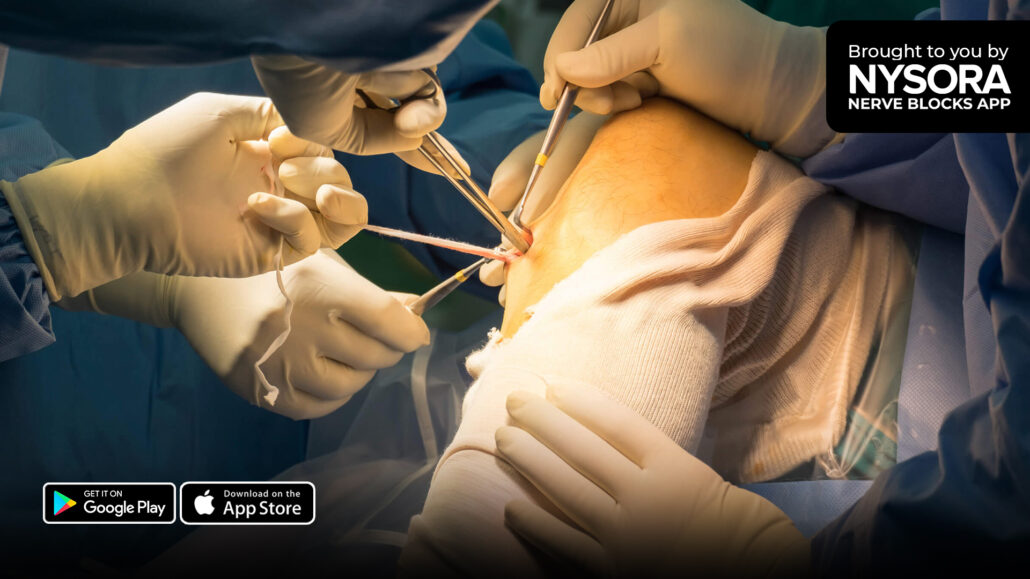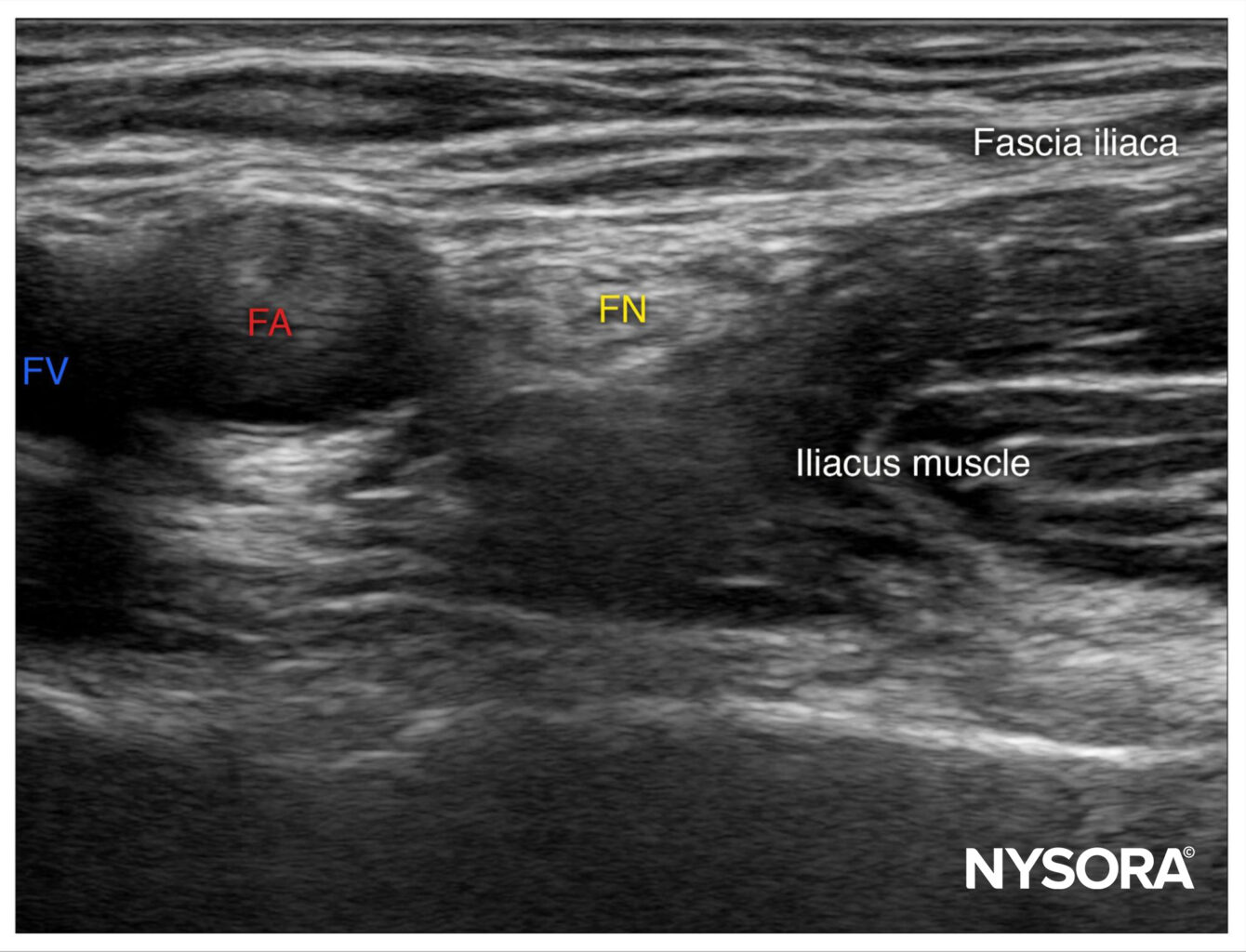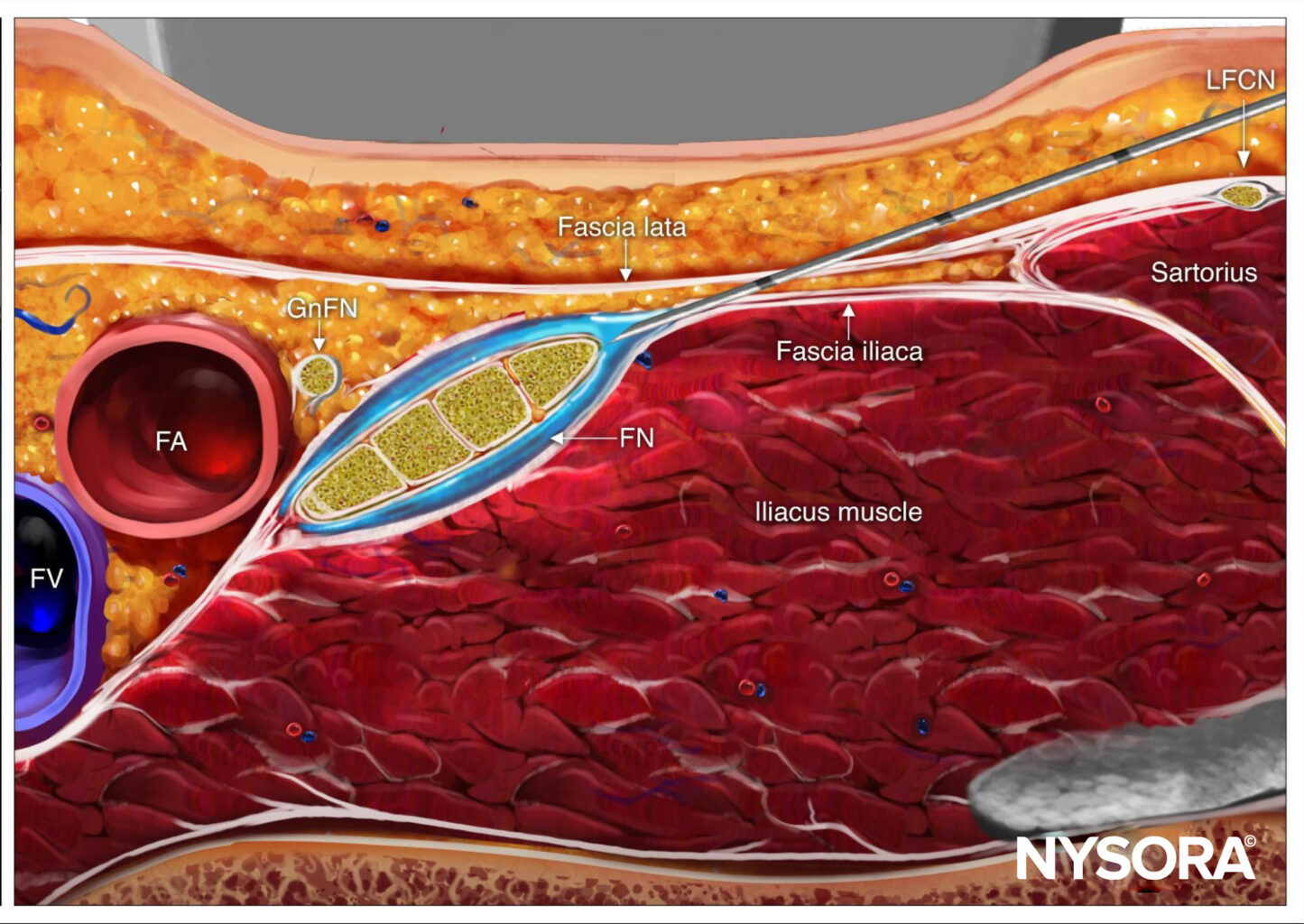
Case study: Anterior cruciate ligament repair surgery
ACL surgery is a type of knee surgery where a new anterior cruciate ligament is made from a graft of replacement tissue from one of two sources:
- A portion of the patient’s own hamstring, quadriceps, or patellar tendon
- An allograft
The type of graft used for each patient is determined on a case-by-case basis.
We’re sharing how our team typically manages patients undergoing anterior cruciate ligament (ACL) repair surgery.
Patients undergoing ACL repair surgery receive a femoral nerve block:
- Place the patient in a supine position and identify the femoral crease as the superficial anatomical landmark.
- Insert the needle in-plane in between the two layers of the fascia iliaca using ultrasound guidance. The needle is inserted from a medial direction to pierce the fascia iliaca lateral to the femoral nerve.
- 8 mL of bupivacaine 0.5% was sufficient in this patient as the femoral nerve was completely surrounded by the local anesthetic.
- Most patients receive 5 mg ketamine + 2 mg midazolam for premedication.
Check out the Femoral Nerve Block on NYSORA’s Nerve Blocks App to learn more about this technique!

Sonoanatomy

Reverse Ultrasound Anatomy
Comparison of sonoanatomy and reverse ultrasound anatomy for a femoral nerve block with needle insertion in-plane. The local anesthetic spread is shown in blue.
For more case studies like these and the complete guide to the 60 most frequently used nerve blocks, download the Nerve Blocks App HERE. Don’t miss the chance to get the bestselling NYSORA Nerve Blocks App also in book format – the perfect study companion with the Nerve Blocks app!



